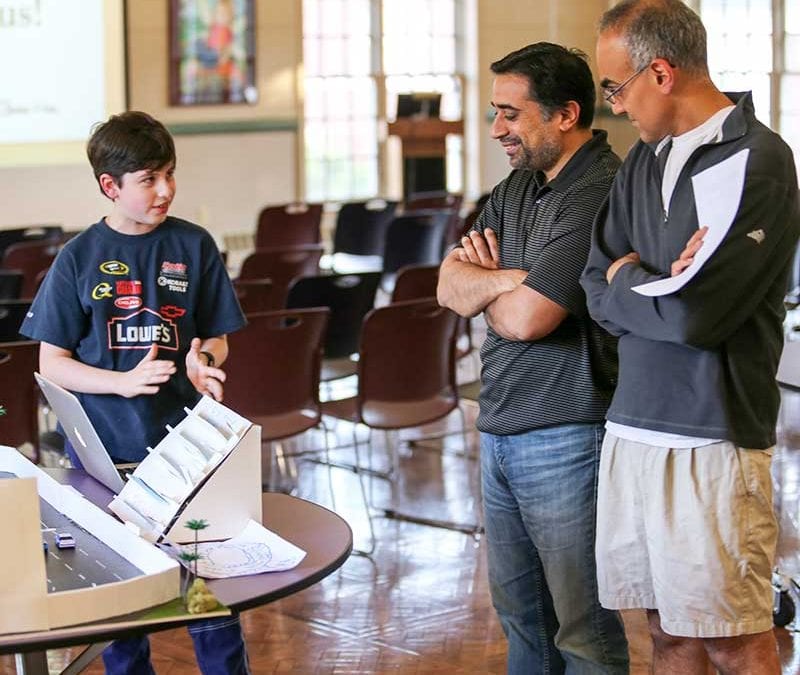from the desk of Fifth Grade Teacher Monica Burrows
“What if……you could learn about anything you wanted?” This was the question asked of my students during our first Fifth Grade Genius Hour. The following weeks were spent with open-ended inquiries and activities designed to bring student interests, wonders, and passions to the surface.
The concept behind Genius Hour, or “20% time”, has a long history in the corporate world. While the idea was recognized by other companies as far back as 1950 (3M’s Post-It Notes came from 20% time), Google was the most recent to recognize the “genius” of their employees and the benefit of making a portion of company resources available to pursue individually inspired research and product development. In fact, new product figures as high as 50% have been credited to Google employees spending one day a week researching individually inspired ideas. In the best-selling book Drive, Daniel Pink asserts that “the secret to high performance and satisfaction—at work, at school, and at home—is the deeply human need to direct our own lives, to learn and create new things, and to do better by ourselves and our world.”
It only made sense that educators would soon recognize that choice and inquiry-driven learning could increase student engagement and achievement. Allowing space for choice, inquiry, and experiential learning could help students grow into life-long learners who are curious and set out to seek and achieve deep understanding of the world in which they live.
Our Fifth Grade Genius Hour began on the first day with open-ended questions and activities. Students excitedly brainstormed their own interests and passions. They shared interests and listened to the “what if” questions of their peers. This fueled more ideas and conversations.
“I wonder why some people remember their dreams and others don’t?”
“I wonder if I could design a more comfortable and effective soccer cleat?”
“I’ve always wanted to learn more about virtual reality and how it works.”
“Do you think I could make an app during Genius Hour?” Or even,
“I wonder if I could teach my dog not to eat food from the counter?”
Next, students were challenged to present their ideas to peers in a “Shark Tank” inspired scenario. The experience of presenting ideas in a way that made sense and inspired others to support their efforts was an integral part of the learning process. The sharing elicited valuable constructive feedback which students evaluated and utilized to make adjustments to their project plans. In some cases, this was a point where they chose to return to the drawing board and new projects were born.
Of course, throughout the process, there were numerous opportunities to authentically investigate the resources available to us to learn more, including each other and experts within our community. We learned to evaluate the validity and quality of the resources available to us. We learned how to learn.
Finally, at the end of the school year, we shared our year-long projects with friends and family. The buzz in the room was palpable. In addition to sharing our information via standard presentation format, each student was encouraged to create something to “show what they learned.” The fifth graders did not disappoint and the room was filled with brochures advertising services and products, models, an interactive game show, real-time surveys to elicit and share feedback, live demos, prototypes, and more.
Learning experiences such as Fifth Grade Genius Hour inspired our students to be creative, collaborative and innovative. They were challenged to effectively give and receive feedback and to persevere in their project goals. The experience was a step towards preparing them for future workplaces which will consist of collaborative and communicative teams. It is was a step toward releasing adults into the workplace who love what they do.

